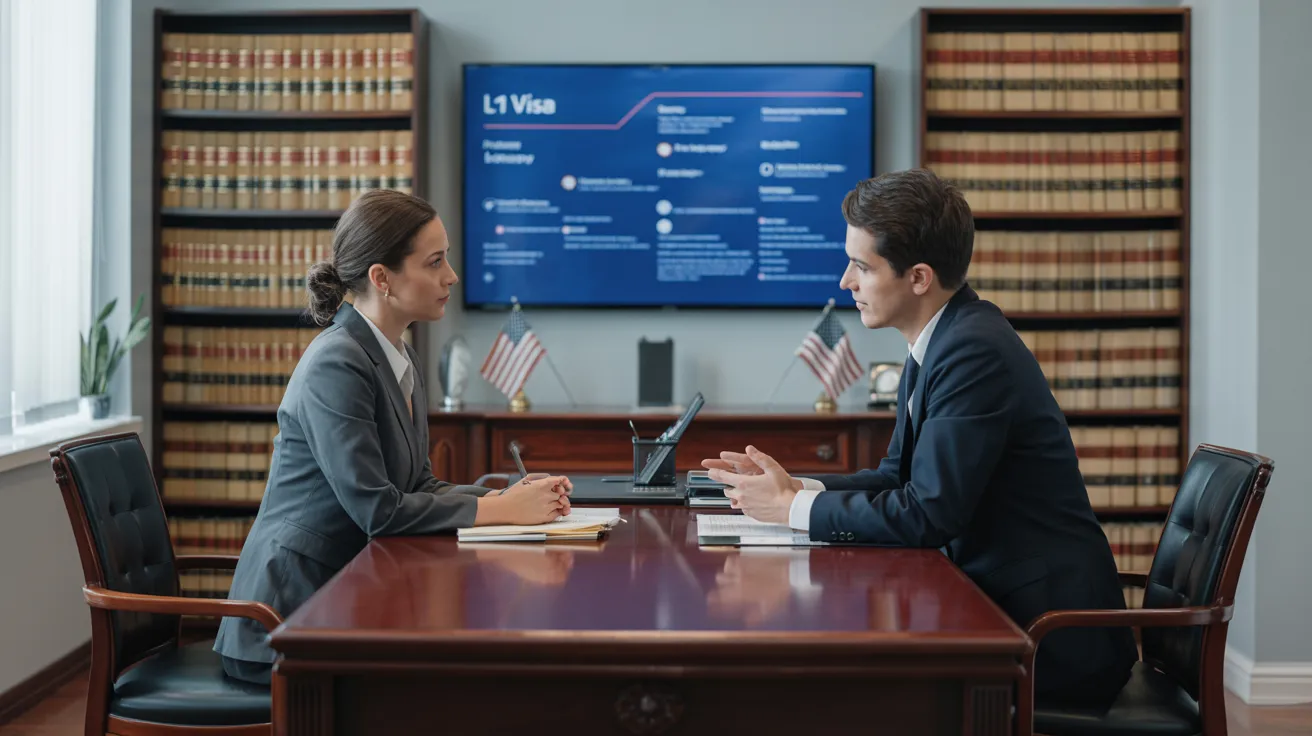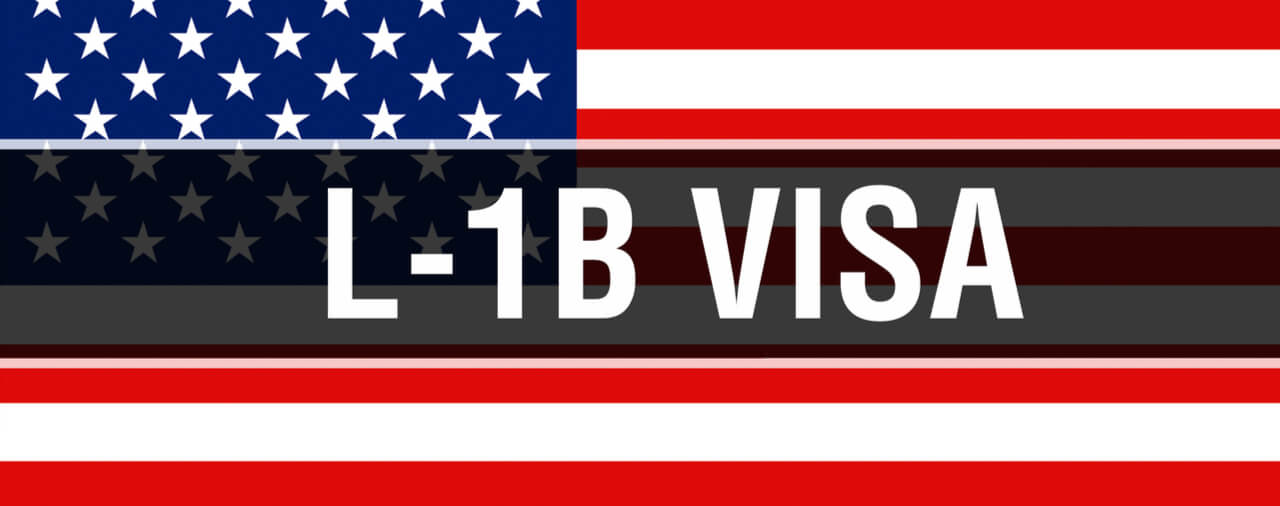Every little thing You Need to Learn About the L1 Visa: Benefits, Demands, and Extra
The L1 Visa acts as an important tool for international business seeking to transfer staff members to the United States, promoting both operational efficiency and the transfer of specialized expertise. With unique classifications for execs and specialized specialists, this visa presents various advantages, consisting of possible pathways to irreversible residency. Nonetheless, understanding the qualification demands and application process is essential for an effective shift. As we check out the complexities of the L1 Visa, it comes to be clear that maneuvering its intricacies is critical for companies intending to take advantage of global ability effectively. What obstacles might you come across in the process?
Summary of the L1 Visa

Sorts Of L1 Visas

Numerous types of L1 visas satisfy the diverse demands of international companies wanting to transfer workers to the United States. The 2 key groups of L1 visas are L1A and L1B, each created for specific functions and obligations within an organization. L1 Visa.The L1A visa is intended for supervisors and execs. This category allows business to transfer individuals who hold supervisory or executive placements, enabling them to manage procedures in the united state. This visa stands for a first duration of approximately 3 years, with the opportunity of extensions for an overall of up to seven years. The L1A visa is especially helpful for companies seeking to develop a solid leadership visibility in the united state market.On the other hand, the L1B visa is assigned for employees with specialized knowledge. This includes individuals who have sophisticated know-how in particular areas, such as proprietary innovations or special processes within the company. The L1B visa is additionally valid for an initial three-year period, with expansions readily available for as much as 5 years. This visa category is perfect for companies that need workers with specialized skills to enhance their procedures and preserve an one-upmanship in the U.S.Both L1A and L1B visas enable dual intent, suggesting that visa owners can make an application for long-term residency while on the visa. Comprehending the differences in between these 2 classifications is essential for services preparing to navigate the intricacies of employee transfers to the USA effectively
Eligibility Demands
To certify for an L1 visa, both the employer and the employee must satisfy certain eligibility standards set by U.S. immigration authorities. The L1 visa is created for intra-company transferees, enabling multinational business to transfer employees to their united state offices.First, the company needs to be a qualifying company, which implies it needs to have a moms and dad company, branch, subsidiary, or associate that is doing company both in the U.S. and in the foreign nation. This connection is vital for demonstrating that the staff member is being transferred within the same corporate framework. The employer needs to additionally have been doing organization for a minimum of one year in both locations.Second, the staff member has to have been used by the foreign business for at the very least one continual year within the three years coming before the application. This work must remain in a managerial, exec, or specialized understanding capability. For L1A visas, which accommodate managers and executives, the worker should demonstrate that they will certainly proceed to run in a similar ability in the U.S. For L1B visas, intended for staff members with specialized knowledge, the individual need to have one-of-a-kind know-how that contributes considerably to the firm's procedures.
Application Process
Maneuvering the application process for an L1 visa includes several crucial actions that should be finished properly to guarantee an effective end result. The initial action is to figure out the appropriate classification of the L1 visa: L1A for managers and execs, or L1B for workers with specialized understanding. This distinction is substantial, as it impacts the paperwork required.Once the group is identified, the united state employer should file Form I-129, Application for a Nonimmigrant Worker. This form ought to include in-depth information regarding the business, the worker's role, and the nature of the job to be performed in the U.S. Accompanying documentation usually includes proof of the connection in between the U.S. and international entities, evidence of the staff member's credentials, and info relating to the job offer.After submission, the united state Citizenship and Immigration Provider (USCIS) will certainly evaluate the petition. If approved, the employee will be notified, and they can then request the visa at an U.S. consular office or consular office in their home nation. This includes finishing Type DS-160, the Online Nonimmigrant copyright, and setting up an interview.During the interview, the candidate has to present numerous files, consisting of the accepted Form I-129, proof of employment, and any extra sustaining evidence. Following the meeting, if the visa is provided, the employee will certainly obtain a visa stamp in their ticket, allowing them to go into the U.S. to benefit the sponsoring company. Appropriate prep work and extensive paperwork are key to steering this procedure properly.
Advantages of the L1 Visa
Among the remarkable benefits of the L1 visa is its capability to promote the transfer of essential personnel from worldwide offices to the United States. This visa is specifically advantageous for multinational business seeking to keep consistency in operations and leadership throughout boundaries. By permitting execs, supervisors, and specialized employees to function in the united state, companies can guarantee that their most essential talent is offered to drive business objectives.Another significant advantage of the L1 visa is its fairly uncomplicated application procedure compared to other job visas. Organizations can seek for the L1 visa without the requirement for a labor accreditation, which streamlines the recruitment of foreign employees. The visa can be approved for an initial period of up to three years, with the possibility of expansions, helping with long-lasting assignments.The L1 visa likewise supplies a course to irreversible residency. Workers on L1A visas (for supervisors and executives) can request a Permit after one year, expediting their change to long-term condition. This feature is an attractive reward for talented individuals looking for security in the U.S. workforce.Additionally, L1 visa owners can bring their prompt member of the family to the U.S. under L2 status, enabling spouses and youngsters to live and study in the nation, improving the overall charm of this visa group. Generally, the L1 visa serves as a necessary tool for global businesses, promoting cross-border collaboration and skill mobility.
Usual Difficulties
While the L1 visa provides various benefits for international business and their employees, it is not without its challenges. One noteworthy hurdle is the stringent documentation and eligibility demands enforced by the U.S. Citizenship and Immigration Solutions (USCIS) Firms need to offer in-depth evidence of the foreign employee's certifications, the nature of the organization, and the qualifying relationship between the united state and foreign entities. This process can be time-consuming and might require legal proficiency to navigate successfully.Another difficulty is the possibility for analysis throughout the application process. USCIS officers might examine the legitimacy of business procedures or the employee's role within the organization. This scrutiny can result in hold-ups and even denials of the copyright, which can substantially influence the business's operational plans and the employee's occupation trajectory.Furthermore, the L1 visa is connected to the funding employer, which indicates that work adjustments can complicate the visa status. If an L1 visa owner desires to change employers, they should often go after a various visa group, which can include complexity to their migration journey.Lastly, preserving compliance with L1 visa policies is crucial. Employers need to assure that their employee's role straightens with the first request and that the service proceeds to meet the qualification demands. Failing to do so can cause abrogation of the visa, influencing both the employee and the company. These challenges necessitate detailed prep work and continuous management to guarantee a successful L1 visa experience.
Tips for Success
To successfully browse the L1 visa process, thorough prep work is important. Beginning by thoroughly comprehending the certain needs for the L1 visa classification you are applying for, whether L1A for supervisors and execs or L1B for workers with specialized expertise. Gather all required documents early at the same time, consisting of evidence of your work background, organizational framework, and the nature of the service operations.Engage legal advice experienced in migration law to lead you via the ins and outs of the application. An attorney can help guarantee that your application is total, precise, and compelling. They can additionally aid in getting ready for potential demands for proof (RFEs) by proactively resolving locations that might raise questions.Additionally, preserve clear communication with your company, who need to provide crucial assistance for your application. What Is L1 Visa. Confirm that they recognize their duties, including submitting the necessary requests and supplying documentation that corroborates your learn more function in the organization.Prepare for the visa interview by practicing solution to common questions regarding your expert history and the nature of your work. Showing self-confidence and quality can greatly impact the end result of your application
Regularly Asked Questions
Can Household Members Accompany L1 Visa Holders?
Yes, member of the family can accompany L1 visa owners. Partners and unmarried children under 21 years old are qualified for L2 visas, which allow them to live and examine in the USA throughout the L1 holder's stay.
Exactly How Long Can L1 Visa Holders Remain In the U.S.?
L1 visa holders can at first remain in the U.S. for approximately 3 years (L1 Visa). This duration might be extended, enabling a maximum stay of 7 years for L1A visa holders and 5 years for L1B visa owners
Is the L1 Visa a Twin Intent Visa?

Can L1 Visa Owners Make An Application For an Eco-friendly Card?
Yes, L1 visa owners can get a permit - L1 Visa. The L1 visa supports dual intent, allowing holders to seek irreversible residency while preserving their non-immigrant standing, facilitating a smoother transition to a permit
What Occurs if an L1 copyright Is Rejected?
If an L1 copyright is rejected, the candidate might get a notification describing the reasons for denial. L1 Visa. They can appeal the decision, reapply, or discover alternate visa alternatives relying on their scenarios and qualifications
Verdict
In recap, the L1 Visa acts as a vital instrument for international business seeking to move workers to the USA. Recognizing the differences between L1A and L1B classifications, in addition to the qualification requirements and application processes, is crucial for successful navigation of this non-immigrant category. The advantages supplied, including streamlined applications and pathways to long-term residency, better enhance its appeal. Addressing common challenges properly can lead to a more positive result in the copyright procedure.